 |
 |
 |
| |
Clinical Determinants of Bone Mineral Density (BMD) in Perinatally HIV-Infected Children
|
| |
| |
Reported by Jules Levin
CROI 2009 Feb 8-12 Montreal
Denise L. Jacobson*1, Linda A. DiMeglio2, Rohan Hazra3, Mitchell Geffner4, Russ Van Dyke5, William Borkowsky6, Kunjal Patel1, Elizabeth McFarland7, Janet Chen8 and Tracie L. Miller9 for the Pediatric HIV/AIDS Cohort Study (PHACS) Harvard School of Public Health, Boston, MA, US1- Section of Pediatric Endocrinology and Diabetology, Department of Pediatrics, Indiana University School of Medicine, Indianapolis, IN, US2- Eunice Kennedy Shriver National Institute of Child Health and Human Development, Bethesda, MD, US3- Saban Research Institute of Childrens Hospital of Los Angeles, Keck School of Medicine, University of Southern California, Los Angeles, CA, US4- Tulane University, New Orleans, LA , US5- New York University School of Medicine, New York, NY, US6- Department of Pediatric Infectious Diseases, University of Colorado Denver Health Sciences Center, Denver, CO, US7- Saint Christopher's Hospital for Children, Drexel University School of Medicine, Philadelphia, PA, US8- and University of Miami, Miller School of Medicine, Miami, FL, US9
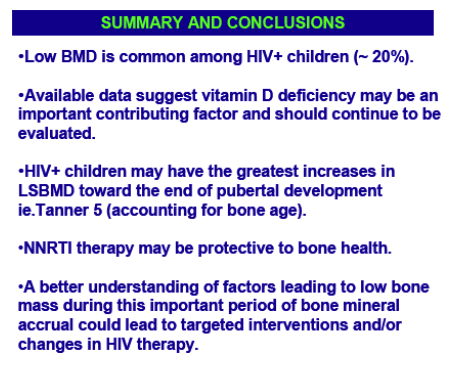
ABSTRACT
Background: HIV-infected children (HIV+) may be at risk for poor bone mineral accrual, but the etiological factors are ill-defined. We sought to characterize bone mineral density (BMD) among HIV+ children enrolled in the US-based PHACS Adolescent Master Protocol (AMP) and to evaluate associations with antiretroviral therapy (ART) as well as virologic and nutritional factors.
Methods: Total body (TB) and lumbar spine (LS) BMD were measured by dual energy x-ray absorptiometry (DXA) in 190 HIV-infected children (HIV+). Clinical (HIV stage and viral load, CD4 %, current ART), and anthropometric data were obtained simultaneously. Age- and sex- adjusted z-scores were calculated for height, BMI, and BMD (adjusted by bone age if outside1 s.d. from chronological age) using population standards. Children with low BMD (TB or LS Z-score < -1.5), had Ca, PTH, bone-specific alkaline phosphatase (BSAP) and 25-OH vitamin D measurements taken. Multiple linear regression models were fit to identify predictors of LS z-scores, adjusted for race, height z, Tanner stage and HIV viral load (< 400 vs. > 400 copies/ml).
Results:
Mean age of the cohort was 12.3 y (range 7-16 y) with 45% male.
The majority was African American (76%). Compared to population norms, the cohort was shorter (z=-0.374, P<0.0001), with greater BMI (z=0.300, P = 0.0002) and lower TB BMD (z= -0.220, P=0.015).
LS BMD did not differ from normal (z=-0.053, P=0.56).
In an adjusted analysis, children on NNRTI therapy had higher LS Z-scores (estimate 0.68 p=0.0027) and those on PI therapy had lower scores (-0.49 p=0.052). There was no association with NRTI therapy (estimate 0.55 p=0.19).
Children with viral load < 400 copies/ml had lower LS scores (estimate - 0.57 p=0.003).
The percent of children with z < -1.5 on SP, TB or either measure was 10.6%, 16.7% and 20.0%, respectively.
Of those with low LS or TB, 27 had triggered follow-up laboratory tests, 67% of which had low serum 25-OH D (< 20 ng/mL).
All 27 had normal Ca. Children with lower 25-OH D had higher PTH compared to those with normal 25-OH D (mean 44 vs 30 pg/ml, p=0.05), while there was no difference in BSAP.
Conclusion: Low BMD among HIV+ children is common. Limited data suggest vitamin D deficiency may be an important contributing factor and should continue to be evaluated. NNRTI therapy may be protective and PI detrimental to bone health.
*Data presented in abstract based on data available by August 16th, 2008
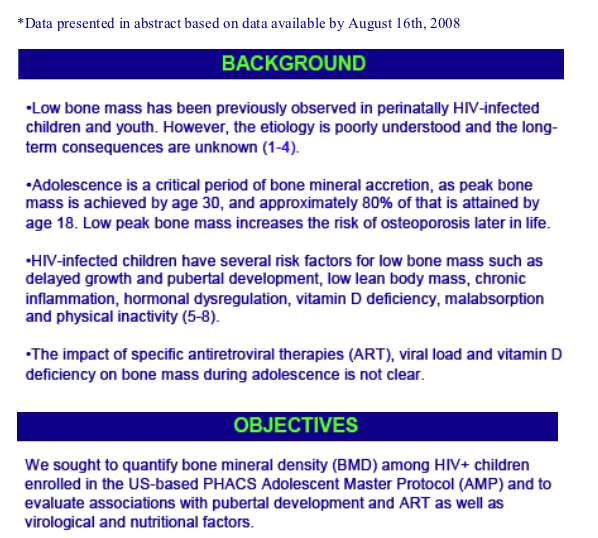


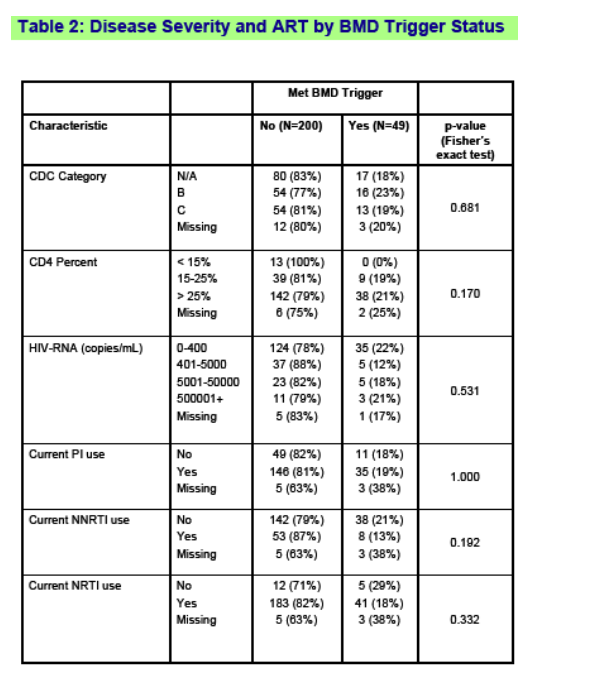
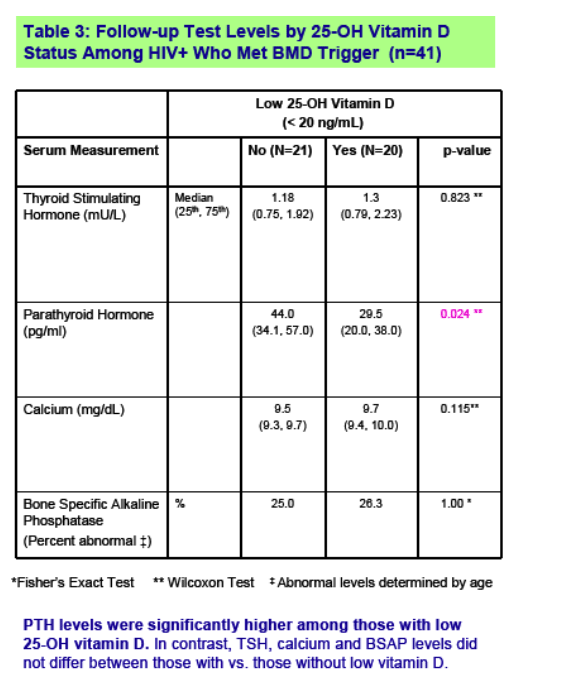
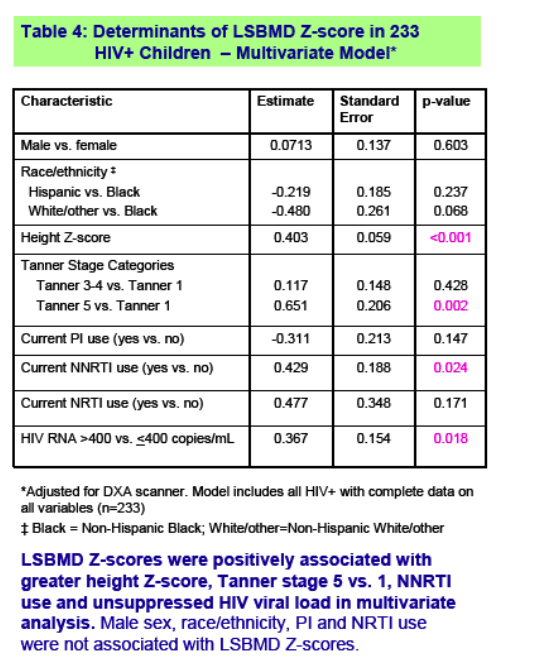
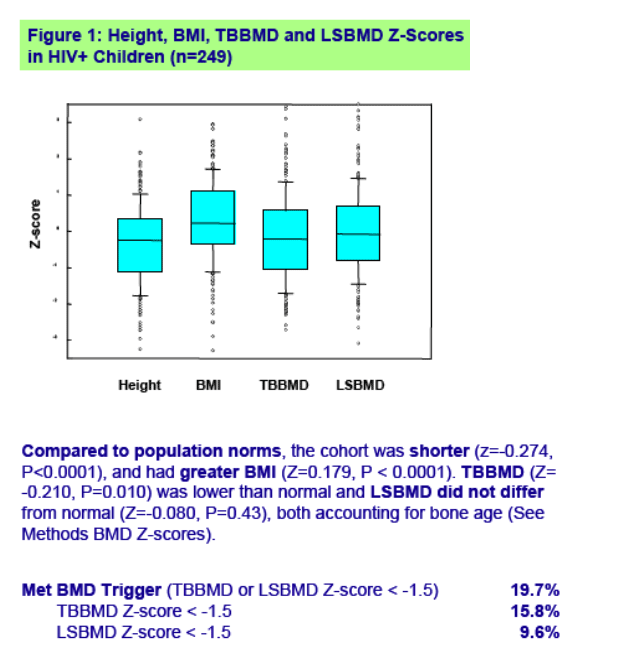
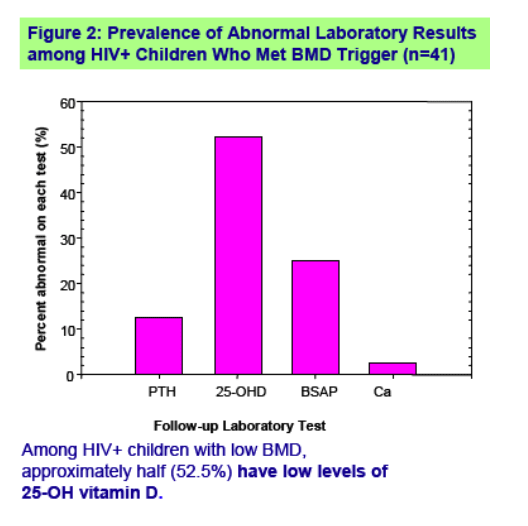
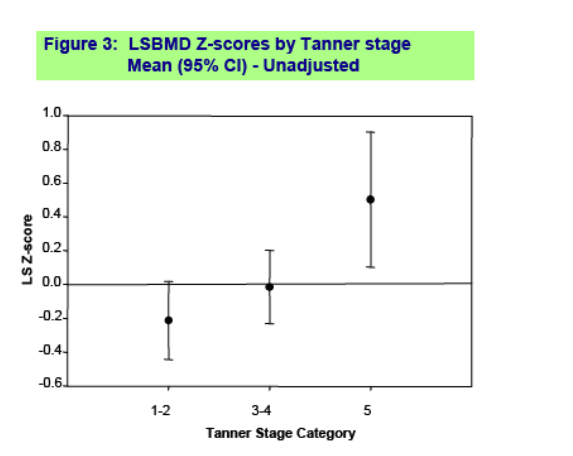
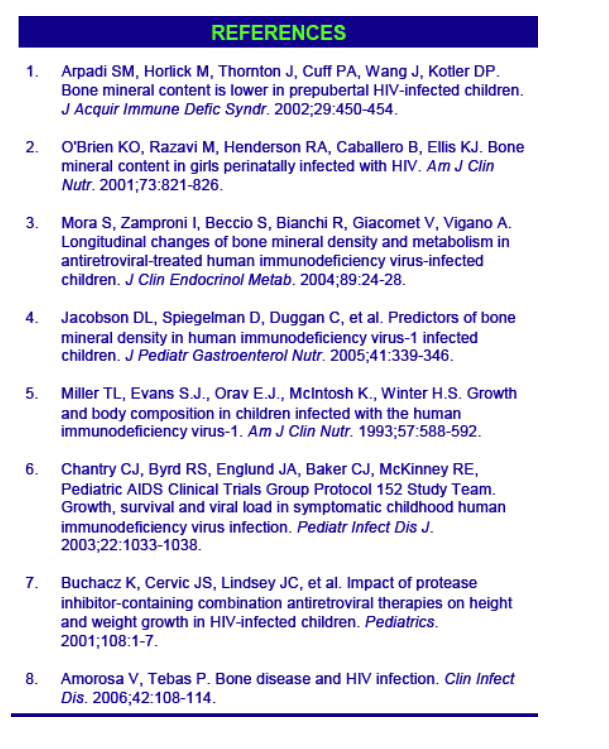
|
| |
|
 |
 |
|
|